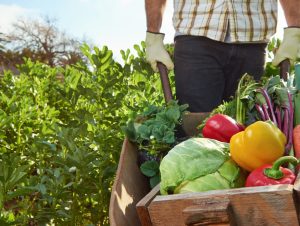If you’ve decided to start growing your vegetables and fruits at home, you’ve made a fantastic choice with far-reaching benefits. Working with soil and plants is a great way to teach your little ones the importance of food and why it’s good to eat fruits or veggies, making it an excellent stress buster and educational activity.
Studies even show that children who garden tend to eat more vegetables and fruits, significantly improving their essential life skills, such as working in groups and self-understanding, all good reasons to get the children involved!
To help you start creating your little crop paradise, here are the basics of growing vegetables and fruits in your yard.
Pick the Right Location
Choosing the right location for your garden is essential because selecting a sub-par area will give you below average crops. It’s best to choose a place where sunlight is present, the soil is moist, and a stable environment where winds aren’t too strong. Once you’ve selected an area, it’s best to invest in a sprinkler system and install them in your garden location. Having sprinklers frees you from the hassle of manually watering your crops in the long run.
Start Small
It’s best to start small because when you plant too much, you may be having carrots for dinner for the next couple of weeks. To prevent getting overwhelmed with fresh crops, begin with a manageable plot for you and your schedule. You can start with an area as little as 8×8, and this can provide you with 64-square feet to work with, which is enough space to make a decent yield of delicious vegetables and fruits. Maintaining this plot size won’t consume every spare minute of your time.
Crop Selection
Though you can choose whatever plant you want to grow in your garden, it’s best to select productive plants that are very easy to grow, especially if it’s your first time or teaching your child how to garden for the first time. These include tomatoes, zucchinis, carrots, cabbages, and radishes. You can also base your choice by determining what you and your family like to eat, how much crops your family will eat, the availability of vegetables in your local grocery stores, and if you’re able to tend to it regularly.
For instance, if you and the family are going for a quick summer venture during the summer break, it’s best to plant tomatoes and zucchinis because they grow best during the middle of summer.
 Where to Plant
Where to Plant
If you plan on growing around two tomato plants, you won’t need to consider their arrangement. However, if you plan to produce a full garden, you need to consider arranging your crops. For example, if you want to plant tall vegetables like sweet corn or pole beans, it’s better to plant them on the north side of your garden, so they don’t block the smaller plants.
When to Plant
Different crops have their best growing seasons, and it’s best to plant them during these times. For instance, cool-season vegetables such as lettuce, spinach, and other root veggies grow particularly well during spring. Warm-season vegetables, including tomatoes and peppers, are best to plant during summer since they require warm soil.
Take the time to build your home garden to provide you and your family with fresh organic crops whenever you please. It also serves as a good life lesson for your little ones, so grab your trowel and start planting!

